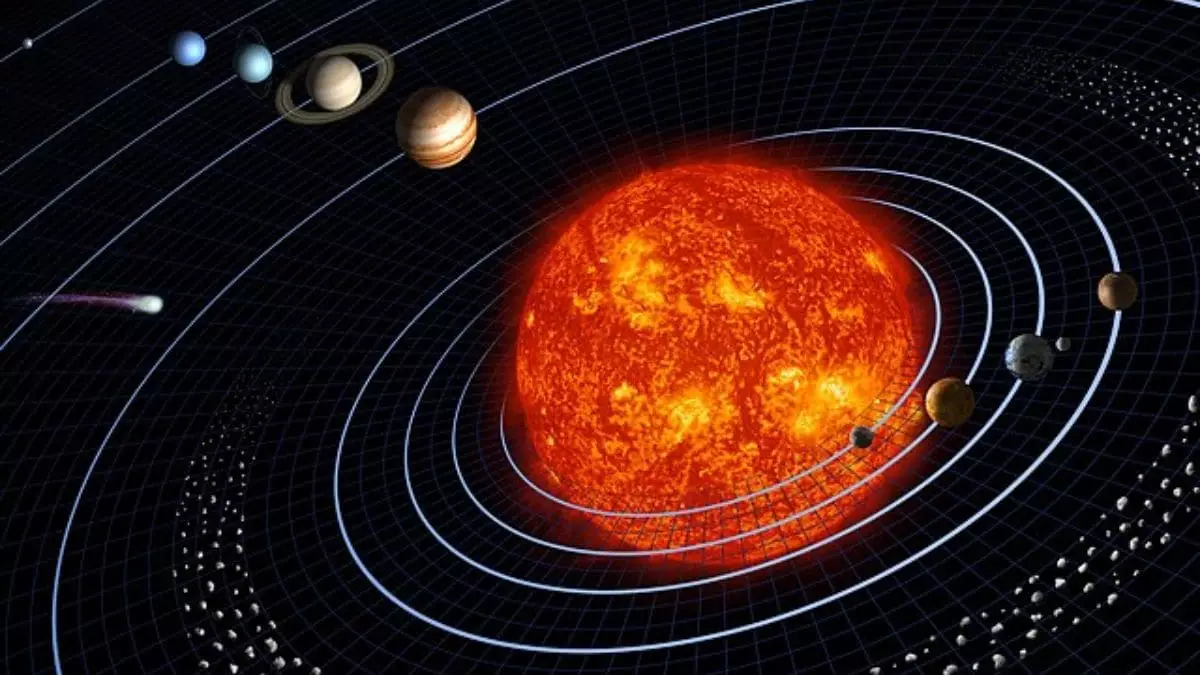In the vast, seemingly unchangeable narrative of our solar system, one small meteorite—barely 50 grams—has emerged as a game-changer. The Northwest Africa 12264 meteorite, originating from beyond the asteroid belt, is challenging centuries of assumptions held by planetary scientists. Its chemical composition and age measurements suggest that the process of rocky planet formation in our solar system was surprisingly synchronized and occurred much earlier than traditionally believed. This tiny fragment doesn’t just rewrite planetary timelines; it forces us to reevaluate the fundamental mechanisms that shaped our cosmic neighborhood.
More Than Just a Piece of Space Rock
What makes this meteorite truly revolutionary is its origin and age. Scientists have identified it as coming from the outer reaches of the solar system, yet its dating reveals it formed approximately 4.564 billion years ago—virtually the same age as basalt samples from inner planets like Earth and Mars. Previously, it was assumed that rocky bodies in the outer solar system—including Jupiter, Saturn, and beyond—formed significantly later because their water-rich compositions were thought to hinder the quick buildup of planetary bodies. However, this meteorite indicates that the differentiation and solidification of outer solar system objects occurred almost concurrently with those nearer the Sun. This is a bold challenge not only to geochronology but to our entire understanding of planetary development.
Implications Beyond Our Solar System
Furthermore, the findings have profound implications for the broader universe. By aligning with observations of distant exoplanetary systems, the evidence suggests that planet formation might be a more rapid and uniform process across the galaxy than previously assumed. The notion that water-rich, distant bodies took longer to form is now under scrutiny. Instead, the universe may favor an accelerated timeline, where planetary building blocks coalesce rapidly over large regions of stellar disks. This bolsters the argument that Earth-like planets could be more common—and form sooner—than current models suggest, offering hope and a paradigm shift for astrobiology and the search for extraterrestrial life.
A Call to Rethink Celestial Narratives
My critique of this discovery lies in its challenging of comforting narratives about cosmic history. For decades, the idea that outer planets and their bodies lagged behind mirrored a slow, deliberate universe aesthetic—one that aligns with our cautious human tendencies. Now, this small meteorite confronts that idea head-on, suggesting a universe far more dynamic and rapid in its creativity. Yet, scientists still grapple with the bigger question: How representative is this single meteorite? Is this an anomaly or a glimpse into a universal pattern? While the evidence is compelling, it’s essential to remain skeptical and insist on further research.
This revelation also raises uncomfortable questions about our current models and the robustness of our timelines. We must be willing to confront the notion that our understanding of cosmic evolution is incomplete and perhaps overly simplistic. Humanity has a tendency to cling to established narratives, but the universe, in its vastness, often defies such constraints. As we refine our theories, it is vital to recognize that new evidence like this meteorite not only adjusts our scholarly views but also humbles our place in the cosmos.
### Final thoughts
The tiny Northwest Africa 12264 meteorite might seem insignificant on the grand scale of the universe, but its implications are anything but trivial. It threatens to upend long-held assumptions, urging us to reconsider the speed and simultaneity of planetary formation throughout the galaxy. In doing so, it invites a more nuanced, intricate understanding of cosmic history—one that is more urgent and complex than simple, linear timelines suggest. As we continue to uncover such surprises, it becomes clear that the universe’s story is far more dynamic, unpredictable, and awe-inspiring than we ever dared to imagine.

Leave a Reply